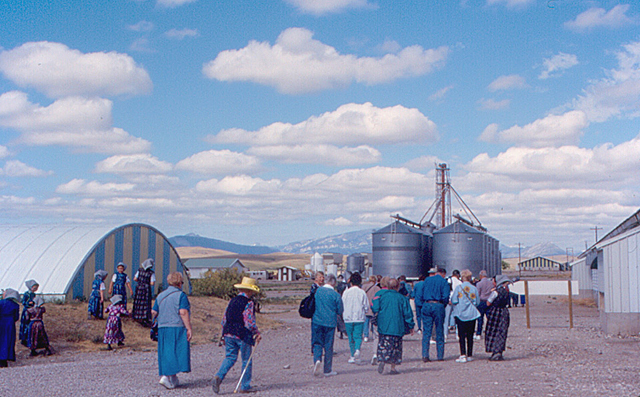A Montana Hutterite colony has plowed under a field of lentils and erected instead a facility for manufacturing the steel roofs and siding materials used in building construction. A report in the Billings Gazette last week explained what the colony is doing.

The new venture, called Valley Steel LLC, is located at the Golden Valley Hutterite Colony a couple miles south of the southern Montana town of Ryegate. The town is located in the Golden Valley area of the state about 50 miles northwest of the city of Billings. Until this past spring, the colony had focused its economy entirely on a variety of agricultural operations—hogs, chickens, turkeys, milk, wheat, lentils, and so on.
But the prices of wheat have dropped, raising hogs has become a break-even project, and running the dairy has become increasingly expensive. The leaders at Golden Valley realized that continuing to depend exclusively on agriculture was no longer a reasonable option for the colony. They had talked about trying something entirely different but they were nervous about making a big change. Dan Kleinsasser, the colony member directing the new operation, told the newspaper, “Agriculture is not treating us well anymore. We had to find a way to expand.”

The reporter quoted Courtney Kibblewhite, who works for the Northern Broadcasting System, to the effect that expanding into manufacturing as a partial substitute for the usual agricultural economy is not an option for ordinary Montana families. A family-owned ranch or farm would have too few people to staff any kind of manufacturing operation; employing outside workers would be prohibitively expensive. The Hutterite colonies don’t have those kinds of obstacles. While they face the same market forces as other ranches, their communal operations do allow them to expand or diversify in ways that one or two families living on a private farm or ranch cannot imitate.
In order for the Golden Valley colony to operate the new manufacturing operation—tracking inventory, ordering materials, running software—colony leaders decided to gain access to the internet for the first time. They installed one computer in the main office of the new warehouse and have it connected to the web. Mr. Kleinsasser said that they keep the room locked. The machine that produces the custom steel trim is quite large; it cost them $420,000. It will fold steel into whatever shapes are drawn on the touch-screen monitor that controls it.
 Janzen and Stanton’s book The Hutterites in North America (2010) helps put the Golden Valley development into perspective: Hutterite colonies in general are quite open to new technological ventures. New industries at the colonies often require the latest media, technology, and equipment. “Without them, they cannot compete on the open market,” the authors wrote (p.261). If the available machinery is not capable of doing the tasks they need to accomplish, the Hutterites often design and build what they want themselves.
Janzen and Stanton’s book The Hutterites in North America (2010) helps put the Golden Valley development into perspective: Hutterite colonies in general are quite open to new technological ventures. New industries at the colonies often require the latest media, technology, and equipment. “Without them, they cannot compete on the open market,” the authors wrote (p.261). If the available machinery is not capable of doing the tasks they need to accomplish, the Hutterites often design and build what they want themselves.
But innovative uses of the latest technology must fit in with the peaceful, religious basis of the colonies. In the conclusion to their book, the authors summarized the Hutterite way of life, including their “effective conflict-resolution techniques … [and their] commitment to nonviolence, modesty, and self-effacement …” The Hutterites are “also open to technological innovations, which provide an economic foundation for their spiritual existence (p.305),” Janzen and Stanton concluded.